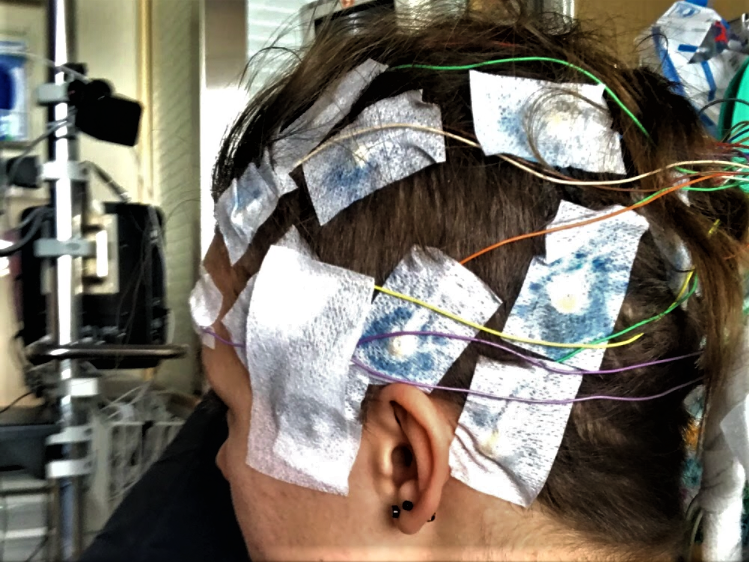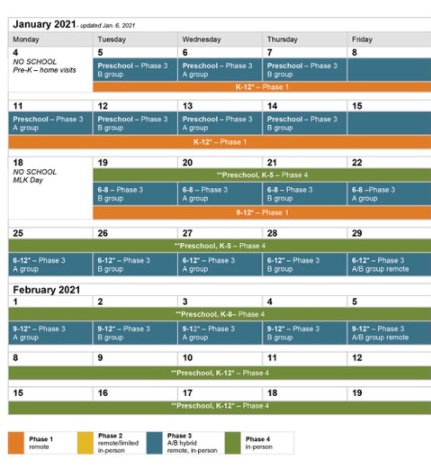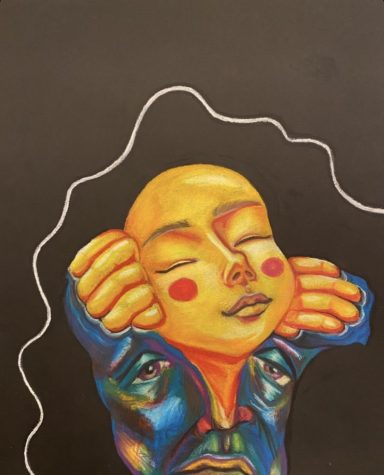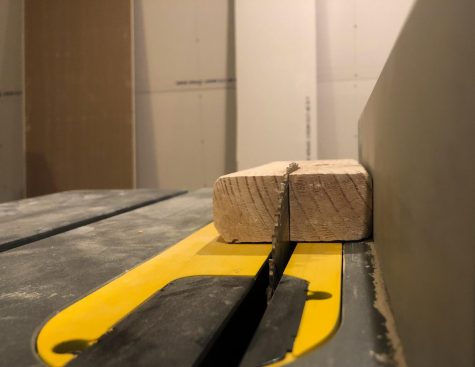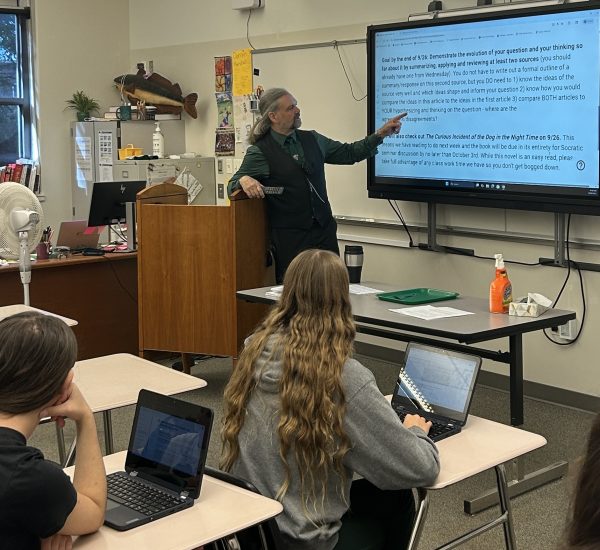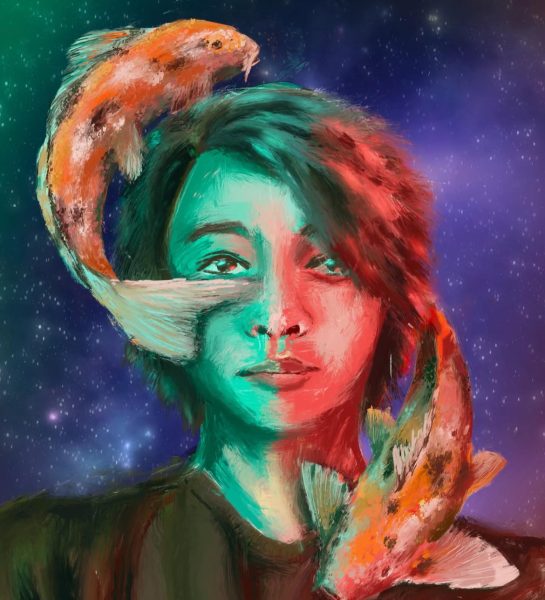Two years ago, I had my first seizure.
Electrodes glued to my head for five days in a test called an EEG
If you do not already know me, hello. I am an Editor in Chief of Etched in Stone. I am the one on the Fossil Ridge Dance Team with a buzzcut. I am the one lost in other worlds of Star Wars theories and the nostalgia of Kung Fu Panda. I am the one who watches both All Elite Wrestling and The Great British Baking Show (because everyone needs both Hikaru Shida and Mary Berry in their lives). I am the one who does not subscribe to a political party, and instead subscribe my support to those who advocate for basic human rights. I am the one who is shy, and prefers essays over socratic seminars in class. I also have epilepsy. And while this fact is not the only thing that is a defining part of who I am, I recognize that it is a part of my story—and I am not ashamed to tell others about it.
October 7, 2018 was a day that would change my life forever. It started as a normal day, and it mostly was. I went to see Venom in the movie theater with my brother, Preston. I helped set the table for my grandma’s birthday party, which my family was hosting. However, the night ended with a ride in an ambulance and my body in more pain than I had ever felt in my life. While I could tell you my entire journey and life story over the past two years, I do not feel like that would be productive. Instead, I would like to share about epilepsy itself, and the realities of it that people do not know about.
I can say without a doubt that the first thing people ask me when they find out I have epilepsy is “What do seizures feel like?” This question depends on the type of seizures people experience, as they have different amounts of consciousness in the middle of them. For me, I have tonic-clonic seizures, meaning I am completely unconscious with a convulsing, rigid body. Although people expect me to describe it as a super weird or interesting feeling, honestly it feels like sleeping. That is it.
However, that is only one small part of what seizures feel like for me. The aftermath is so much worse. After I regain consciousness, which typically takes half an hour, I am able to identify what happened quickly. I can tell by the pain that cannot be replicated by anything else. My head throbs, giving off the sensation of twenty people drilling into my head all at once, for hours without relief. My jaw aches and my body is extremely sore. As a dancer, I have done intensives where I am dancing eight hours a day for two weeks. Yet, it does not even slightly compare to my body soreness after seizures. On the silly pain scale they ask at the emergency room (one to ten), what I feel is a ten. That is what seizures feel like. Pain, exhaustion, and frustration.
Like any other chronic illness, it can take months or even years to find a diagnosis. For example, just last January doctors finally got data showing seizure activity in my brain. This meant it took a year and a half to get confirmation that I for sure had generalized epilepsy. I had several blood draws, MRI’s, and CT scans that all came back normal. However, the most common test for neurologists to understand patients’ epilepsy is called an electroencephalography. That is a mouthful, so it is simply referred to as an EEG. During this time, electrodes are glued to a person’s head to track their brain waves. They look for spikes, which show where abnormalities are in the brain—pointing to what part of the brain is causing seizures.
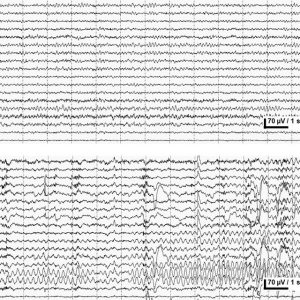
For me, it was not until my third EEG that my brain showed any signs of abnormal brain waves. I had to do one that was three hours, then 24 hours, then five days. It took nights of sleep deprivation, removal of medication, and extending the number of testing days in order to find answers. Additionally, the entire time I was attached to a giant chord, had heart and respiratory monitors, and a camera watching my every move. An EEG is funny because it is the only time when doctors are constantly hoping that I would have a seizure, and every day doctors would check in with new data and saying “unfortunately we did not capture a seizure yesterday.”
Something people will not fully understand unless they know someone with epilepsy is the lengths they will go to in order to prevent seizures. If someone has focal epilepsy, meaning there is a specific part of the brain causing seizures, they might get brain surgery if medication does not work. This invasive surgery opens the skull to take away a small portion of the brain that causes these abnormalities. Personally, I have generalized epilepsy, basically meaning my entire brain is messed up. Therefore, I have gone through many medications and crazy doses to try to prevent my epilepsy from controlling my life.
A common misconception people have is that flashing lights always cause seizures. However, only three percent of people with epilepsy are photosensitive. So many different factors can induce seizures such as hyperventilation, lack of sleep, stress, missed meals, medications, alcohol or drug abuse, and head trauma. Most people with epilepsy, like me, never know the causes of their seizures. I will never know. At first this was very frustrating to me, as I like clear cut answers, but I have made my peace with it now. After all, why stress over things you cannot control? Instead I work on having a consistent routine, and always searching for new ways to take care of my body.
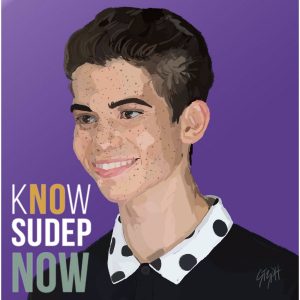
The most difficult conversations surrounding epilepsy is talking about SUDEP. This is a sudden, unexpected death in epilepsy. This occurs in healthy people who have no other way they possibly could have died. The causes of this have to do with abnormal cardiac, respiratory, or brain functions during or after the seizure. SUDEP happens the most when people are sleeping, as there is nobody to provide seizure first aid around them. And although most people do not know about SUDEP, one out of a thousand people with epilepsy die from a fatal seizure. I remember in January when my neurologist spoke to me about SUDEP. It was not a new topic to me, but hearing her say that made it that more real to me. Epilepsy is scary. There are chances of serious injury, brain damage, and death.
I use my Instagram account to promote epilepsy awareness often. I share my own story as well as facts about the condition like the ones I have explained above. I hope that through this activism, at least one person knows how to help someone when they have a seizure. Also, it has helped me build a community. Many people who follow me, also with epilepsy, have reached out through my posts. Often these people have been afraid to tell others about their condition or share about it online. I hope that I can always be a safe person to come to for education and support surrounding epilepsy.
When I started using my platform for epilepsy activism, the most common thing I hear is “You’re so brave!” While it is said with good intentions, those words always feel foreign to me. I do not really feel brave. I feel that everyone is brave enough to fight their personal battles, and I am no different. Yes, I have some extra challenges, but I am just doing my best to live as genuinely and authentically as I can.
On October 16, the day after my eighteenth birthday, I will be one year seizure free. I almost feel more proud of that fact than reaching adulthood. It has been very difficult to reach this point. Previous records included one hour, one week, one month. Before this month, the closest I have gotten to a year was nine months.
I am so proud to get to this point, but I could not have done it alone. I am so thankful for my doctors, who have never stopped looking for solutions for me. I am thankful for my friends and teachers, who have offered so much support during my most difficult times. But most of all, I want to thank my family. They have witnessed my seizures and they still haunt them. They worry constantly every time they hear a thump or a noise and rush to check on me. I know that as difficult as epilepsy is for me, it is also extremely difficult for them to stand by and watch. So, I am so grateful for them taking care of me during seizures and keeping me safe.
Never take your health or support system for granted. I did over two years ago, but I will never again.
Please take a moment to read through seizure first aid. It could save somebody’s life someday.
- Get person to the floor safely, place something under their head.
- Start a timer. It is important to know how long seizures last.
- Loosen any tight clothing. Remove hazardous objects away from the person.
- Turn the person on their side. This is important so they do not choke.
- Do not hold the person down or put anything in their mouth.
- After the seizure ends, stay with the person until they are conscious and aware again. Speak to them in soothing tones and stay calm.
- Only call 911 if the seizure lasts more than five minutes, if the person is injured, pregnant, or having trouble breathing.
Your donation will support the student journalists of Fossil Ridge High School. Your contribution will allow us to purchase equipment and cover our annual website hosting costs.

Co-Editor in Chief and senior Anna Henning is ecstatic to be entering her fourth year of journalism. Henning has grown up loving writing, and has taken every writing class she can. She really enjoyed taking Creative Writing freshman year, but Journalism II has always been her favorite class. Henning...



